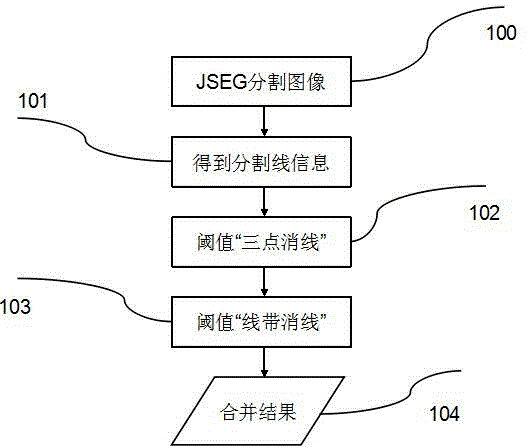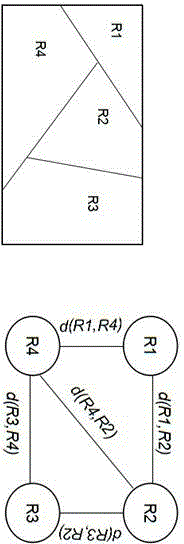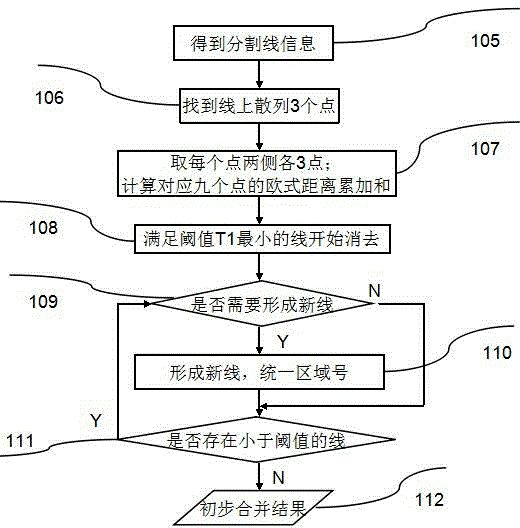Digital image over-segmentation edge removing method based on color similarity
A digital image and similarity technology, applied in image analysis, image enhancement, image data processing, etc., can solve the problems of different merge results, low effect, and cannot guarantee that the areas with the smallest feature difference are merged first, so as to reduce the over- split effect
- Summary
- Abstract
- Description
- Claims
- Application Information
AI Technical Summary
Problems solved by technology
Method used
Image
Examples
Embodiment Construction
[0021] The present invention will be described in further detail below in conjunction with the accompanying drawings.
[0022] The process of the threshold removal region error edge described in the present invention and the method for merging over-segmented regions is as follows figure 1 Shown, which includes 5 units.
[0023] Step 1: Unit 100 is the unit for segmenting images by JSEG.
[0024] Step 2: Unit 101 is the unit for constructing the region adjacency graph. The region obtained by the JSEG segmented image obtained by the processing unit 100 is expressed as a graph structure, such as figure 2 As shown, all the divided regions are regarded as the vertices of the graph, the adjacency relationship of the region is regarded as the edge of the graph, and the feature difference between adjacent regions is defined as the weight.
[0025] Step 3: Unit 102 uses the "three-point line elimination" algorithm for the threshold feature difference, that is, as image 3 As shown...
PUM
 Login to View More
Login to View More Abstract
Description
Claims
Application Information
 Login to View More
Login to View More - R&D
- Intellectual Property
- Life Sciences
- Materials
- Tech Scout
- Unparalleled Data Quality
- Higher Quality Content
- 60% Fewer Hallucinations
Browse by: Latest US Patents, China's latest patents, Technical Efficacy Thesaurus, Application Domain, Technology Topic, Popular Technical Reports.
© 2025 PatSnap. All rights reserved.Legal|Privacy policy|Modern Slavery Act Transparency Statement|Sitemap|About US| Contact US: help@patsnap.com



